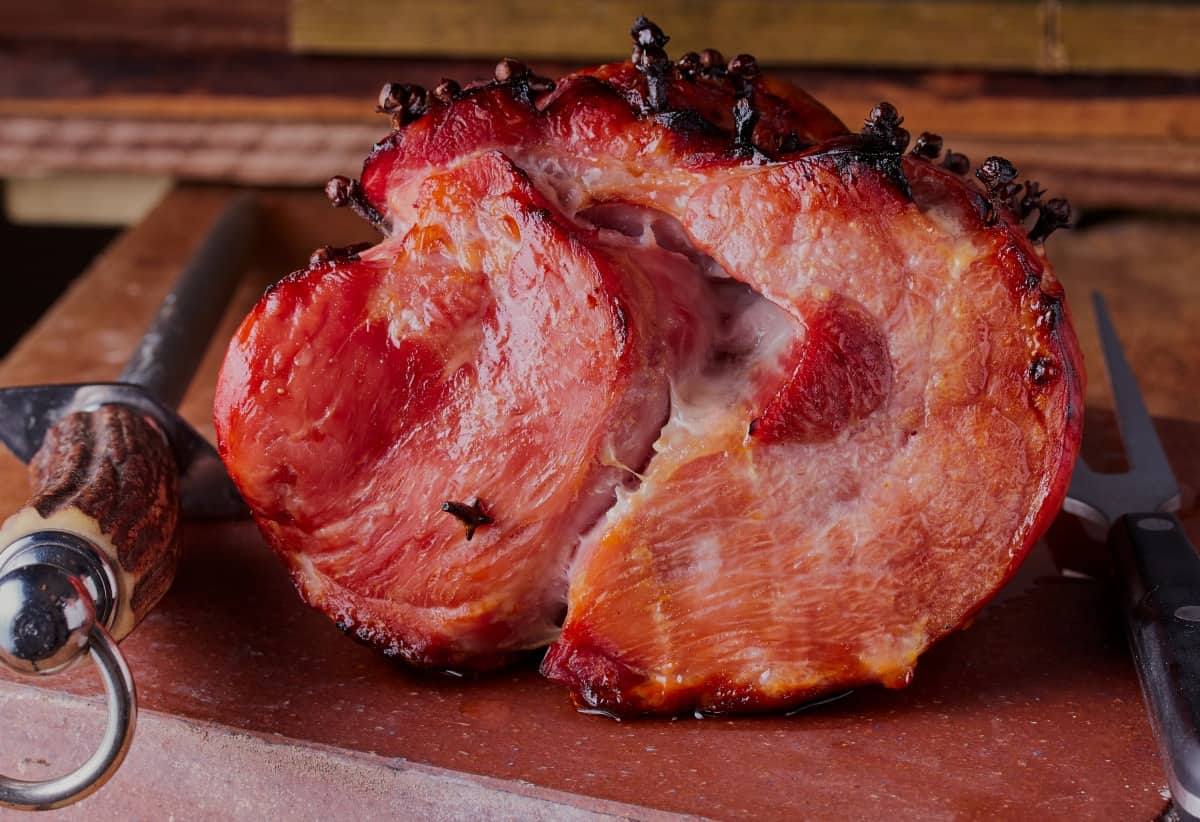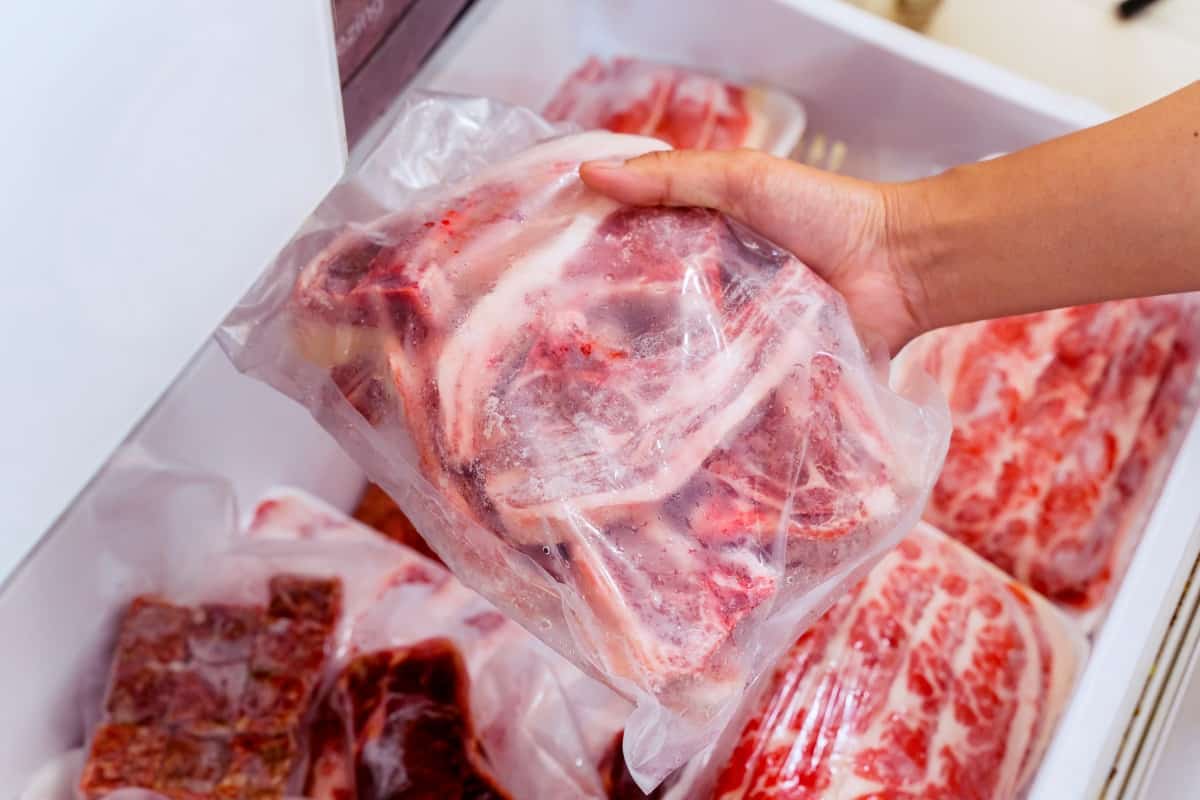Re Refrigerate Raw Beef After It Has Warmed Up
Leftovers are a delicious dilemma which comes from having more meat coming off the grill than there are mouths to eat it hot when it's at its very best.
As discussed in previous articles, there are methods for reheating pulled pork, for reheating steak, and reheating brisket, techniques which can be extended to other meats.
But if you don't eat all that you reheat, the obvious question is: Just how many times can you reheat food?
And can you still have everything you want — flavor and texture — and none of what you don't want, such as dryness, stringiness, sickness inducing bacteria?
In this article, we answer the question: How many times can you reheat meat? And we provide a few tips on the best ways to safely store meat, and to reheat the meats we love, sometimes numerous times.
So, let's delve into the world of the repeat meat reheat.
Contents (Jump to Topic)
- 1 Safety Implications
- 2 Cooling Down your Cooked Meat
- 3 Freeze, Thaw, and Freeze Again
- 4 Once More, Into the Heat
- 5 Defrosting from Deep Frozen
- 5.1 Water Baths
- 5.2 Reheating Food in the Microwave
- 5.3 Reheating in the Oven
- 5.4 Reheating Sous Vide-Style
- 5.5 Reheat Using the 2-Zone Grill
- 6 The Food Version of the Law of Diminishing Returns
- 7 So, Just How Many Times Can You Reheat Food?
Safety Implications

When storing and reheating meat, the obvious primary concern should be to avoid poisoning yourself and your guests.
As discussed in other articles, bacteria will multiply within what the US FSIS calls the danger zone, between 40° and 140° F. Steer clear of those temperatures from the time you purchase the meat to the time the last morsel is blissfully downed.
When it comes to reheating food:
- NEVER use a slow cooker, steam table, or chafing dish. It takes too long for food to get out of the danger zone. Once heated, the meat can be kept warm for hours using any of those containers. But it has to stay above 140 °F for the duration until it's eaten or refrigerated for another meal.
- Bring sauce to a boil. Being in contact with the meat before storing away could mean bacteria is waiting for an opportunity to grow.
Cooling Down your Cooked Meat

Safe reheating begins with safe food storage.
Meat — in fact, any cooked food — can safely be left off the heat for two hours. After that, it's just a matter of how fast (and maybe what variety of) bacteria will grow. You won't be able to see anything growing, but their presence will definitely be felt. Possibly over many unpleasant hours or days.
Before the two hours are up, wrap the meat well in plastic or foil. Be sure it's completely covered, with no gaps or holes to allow air in or juice out. Or use flat, air-tight containers.
The U.S. Food Safety and Inspection Service, an agency of the Department of Agriculture (USDA), recommends storing all cooked foods in shallow containers and small portions, so their temperature will quickly get down below the danger zone (40 degrees).
Modern refrigerators can accommodate hot foods but if you're uncomfortable with that, place the meat into storage bags and submerge in an ice water bath for a few minutes.
You can safely store your meat in the refrigerator for up to four days. If you haven't finished it by then, says the FSIS, freeze it in small, air-tight portions. Once frozen, it will keep indefinitely; but for optimal flavor, it should be used within four months.
Freeze, Thaw, and Freeze Again

If you've already frozen meat in a large batch, you can thaw it in the fridge, take out a portion for reheating, and refreeze the rest.
As long as it never goes above 5 degrees, which it will not in your fridge, then this is perfectly OK — and safe — to do.
Once More, Into the Heat
When you're ready to reheat, plan well in advance because some reheating methods can take many hours or even a day or more.
Rapid reheating will get the job done quickly but at the cost of texture and flavor. For large meats, the slower the thaw, the juicier the end result.
Defrosting from Deep Frozen
Meat should go from the freezer into the refrigerator for safe thawing, says the FSIS.
Plan for at least a day before it's ready for reheating. For large servings, the rule is 24 hours for every five pounds. Are there other ways? Yes. But they require either time, space, effort, and equipment. Is it faster? Possibly.
Here are some such thawing methods:
Water Baths
Water baths — cold, very cold, or even sometimes hot. This may not be for you if your kitchen space is compact. To use a water bath method to defrost, you will need:
- A container large enough to submerge meat
- Lots of water
- A digital thermometer
- Something to stir with (water right around the thawing meat gets very cold. Giving the water an occasional stir breaks up the super cold water, so the thawing process can move along.)
- A plate, lid, or other weight to keep the meat entirely underwater
- Ice or fire, depending on which bath you choose
Cold or Very Cold Water Bath Technique
- Estimate 30 minutes per-pound
- Place meat in an unzipped water-proof plastic bag
- Slowly submerge into a container of water at or below 40° f, keeping zipper above the water (This is to force air out of the bag)
- Carefully zip the bag closed
- Keep the bag completely submerged, use a weight if necessary
- Add more water or ice cubes every hour — The more ice added, the slower the thaw, the more fluid will be kept in the meat
Hot Water Bath Technique
- Only use this method for steaks, chops, or other cuts no more than an inch thick. According to the USDA, you can safely thaw steaks with this method with a minimal loss of texture or moisture
- 11 minutes at 102° F
Reheating Food in the Microwave
Use medium power (50%) and a longer thaw time to keep meat from getting tough. Contrary to popular belief, microwaves don't heat food from the inside out, says the FSIS. The radiation can't reach further than 1½ inches deep. Beyond that, the heat travels into the center from the outer layer.
Thick cuts will need a lot of time. For some, this could be a drawback to thawing by microwave. And, says the USDA, unlike the hot interior of a heated oven, the inside a microwave is at room temperature — something else to slow the thawing process.
If microwave thawing is still for you, remember only to use microwave-safe glass or plastic containers. Cover meat with white paper towels, wax or parchment paper, or a domed glass or plastic container to contain splatters and juice.
Reheating in the Oven
The Food Safety and Inspection Services say foods should reach 165° F before serving, whether they are being reheated on the stovetop, in the oven, or on the grill.
Meathead recommends placing the meat in a double-layered foil packet with a little liquid (you could first coat it with sauce). Place on a cooking sheet or in a baking pan.
Go low and slow on the heat, 225° F, to keep the meat from drying out as it heats.
Heat until internal temp reaches 155° F (165 °F says FSIS). And a few minutes under the broiler after will add crisp to the crust.
Reheating Sous Vide-Style
Meat stored in the fridge can be reheated at 134-140 °F, for 45 minutes per inch of thickness. Allow an extra 30 minutes if it's frozen.
Reheat Using the 2-Zone Grill
Place meat over indirect heat (225 °F) until the inside reaches 155 °F. Place over direct heat for 5-10 minutes to revive the crunch of the crust.
The Food Version of the Law of Diminishing Returns
Used in economics, the concept of the law of diminishing returns — A continual increase in effort does not lead to a continual increase in results — can definitely apply to reheating meat.
Most of the meat's flavor comes from the fat: Aromatic compounds in what the animal eats are absorbed into the fat. Those compounds deepen as the animal ages. During the cooking process, as the fat melts those compounds are released, enriching the flavor of the meat.
But the fat and protein oxidize during the freeze-thaw cycle. If you speak tech, you can read about significant losses in protein functionalities of porcine longissimus muscle, published in the July 2010 issue of Meat Science (yes, it is the name of a real journal).
In plain-speak, the freeze-thaw process caused the pork to lose juice, color, and flavor. (NOTE: It seems this was fresh, not cooked, pork. But the impact should be the same whether raw or cooked. If you have input on this, please share it with us in the comments below!)
So, Just How Many Times Can You Reheat Food?
You can reheat leftovers, or cooked, then frozen, then thawed out meat however many times you like or need to in the days, weeks, and months after it comes off the grill or out of the smoker.
How the meat is stored and reheated is important; the amount of flavor and texture you'll be able to enjoy depends on it.
So, seal your meat air-tight, keep your digital thermometer handy, and follow the tips above to endlessly reheat, eat, reheat, and eat some more.
Have a reheating tip or story to share? Please do so in the comments below!
mitchellfackeffaced.blogspot.com
Source: https://www.foodfirefriends.com/how-many-times-can-you-reheat-food/
Belum ada Komentar untuk "Re Refrigerate Raw Beef After It Has Warmed Up"
Posting Komentar